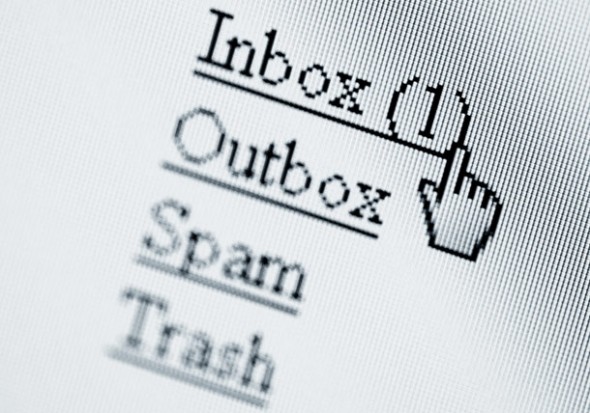Emailing 101: Make a list. Check it thrice.

Over the years, I’ve written a bunch of emails. My gmail “Sent” box is at 5,000+. No joke. Add to that all of the mass emails I’ve written and executed. Phew. I’m gonna skip calculating the total. Math makes me want to take a nap. Let’s just say a lot. I receive a lot too. Every now and then I get one that merits immediate intervention. Seriously, step AWAY from the send button. Slowly, slowly, and nobody has to get hurt.
I just received super weird 952 word newsletter (no ⁋ breaks – gah!) from my favorite online estate jewelry wholesaler. It covered everything from:
- A Bible reference I didn’t quite get.
- A missive on the ‘Occupy’ movement.
- News of a recent move up North and subsequent nostalgia for “huge noble century old (palm) trees that have stood the test of time. These regal trees watched our forefathers ox-plowing the land, they witnessed the pride of the common man as he worked his leased land and his respect for the landed gentry to whom he paid a tithe.)
- Topical blurbs including the upcoming Christie’s New York auction of Liz Taylor’s gems and a supplementary chart explaining how the current consumer price index (CPI) for jewelry makes this the perfect time to buy bling.
Thumbs up for the relevancy of the latter pieces, but it’s worth noting that the link and code for the new merchandise preview extended to subscribers mentioned in the subject line were buried at the end of the email. (Again, props where they are due: that’s a GREAT value proposition to incentivize site visitors to fork over their address.)
I’m relatively certain my critique would not be welcomed by the vendor in question, but I’d like to share some tips as “one to grow on” for interested parties charged with broadcast email campaigns for organizations. If you don’t want to take my word for it, listen to the really, really smart people quoted below.
Takeaway #1
“Brevity is the soul of wit.” – William Shakepeare
Take a note from ‘The Bard’. 952 words is TOO long.
- Not having ⁋ breaks included (or in this case, properly formatted HTML) make it seem five times longer.
- I don’t recommend that you try to pack that much into any one communication. Period. If you must, pare down each point to the minimum and provide links to expanded commentary on your website.
- Having extra content is actually a GOOD thing. Divide it up into multiple newsletters and schedule them for future release. Take the time saved, kick up your heels and enjoy a relaxing beverage.
Takeaway #2
“Send in haste. Repent in leisure.” – Proverb Adaptation
When emails are tough on the eyes, they don’t get read.
- Worse yet, folks unsubscribe. In droves. Or even worser (yes-i-know-that’s-not-a-word), you get reported as a spammer. Then your email marketing provider has to get all up in your business. Trust me, the hassle is worth avoiding.
- This is completely avoidable as most providers have a “Test” feature for both HTML and “text only” versions. If the email is pristine when you’re editing, you may wonder, “Why bother?” with an extra step. Well…
- HTML can be tricky. What looks fine in the WYISWYG editor can come out wonky, especially if you’ve made changes to font style and size that conflict with the email template CSS.
- The program the recipient uses to read emails effects how your content looks when it gets to their inbox. (MailChimp offers a one-click option that checks how your email holds up with most major email clients.)
Takeaway #3
“Great is our admiration of the orator who speaks with fluency and discretion.” – Marcus Tullius Cicero
Sharing personal information is a great way to connect to your readers. BUT (and this is a big but) you need keep it light and filter your thoughts.
- Make it brief, keep the pontification to a minimum, and put the personal stuff in a letter style intro or closing section.
- Keep away from political and religious fodder… and extensive details about your kids/dogs/cats/turtle/possum. Respect the fact that people who signed up to receive your emails did so with the implicit trust that you would be providing valuable information about something in which they have an interest.
- CAVEAT: You get a pass on the above rule if politics/religion/kids/dogs/cats/possums are central to your brand. Other than that, start a personal blog as an outlet for personal interests.
So, that’s my list. Did I miss anything? I’d welcome your tips, tricks, and cautionary tales in the comments.
 karabrickman.com
karabrickman.com
Hi, I have found that I get a strong reaction whenever I use SCREAMING ALL CAPS in my e-mails. It really seems to get peoples’ attention, and they let me know how they feel.